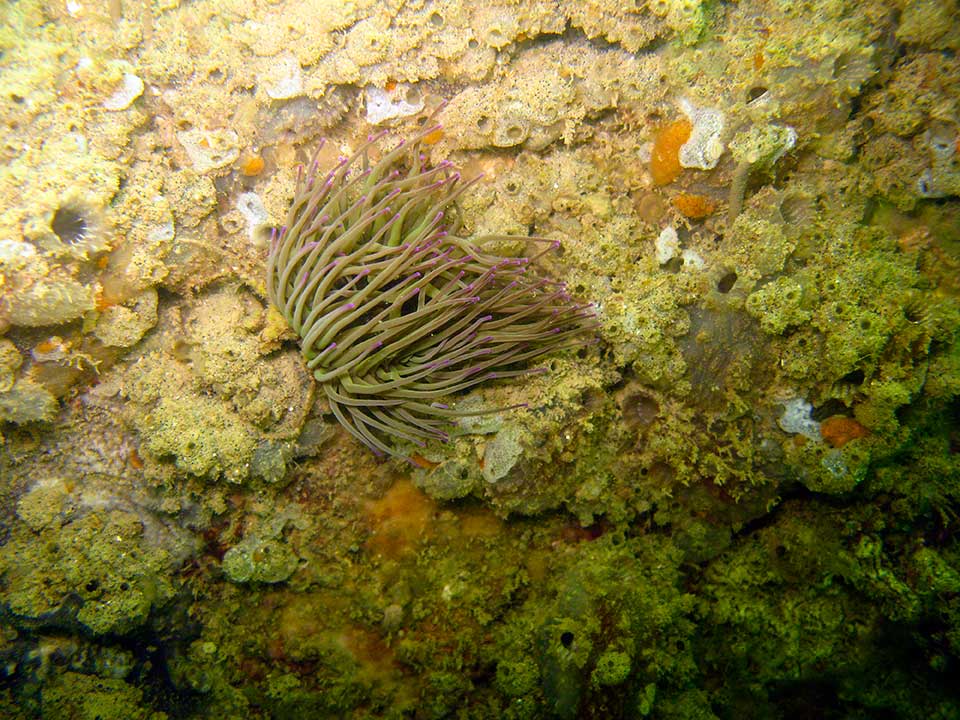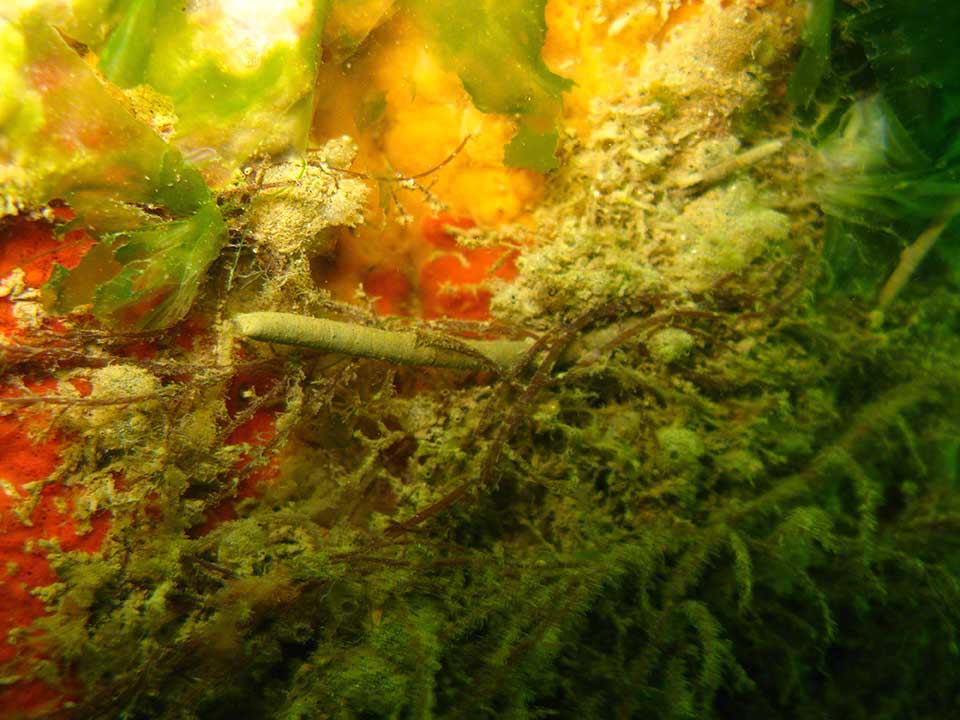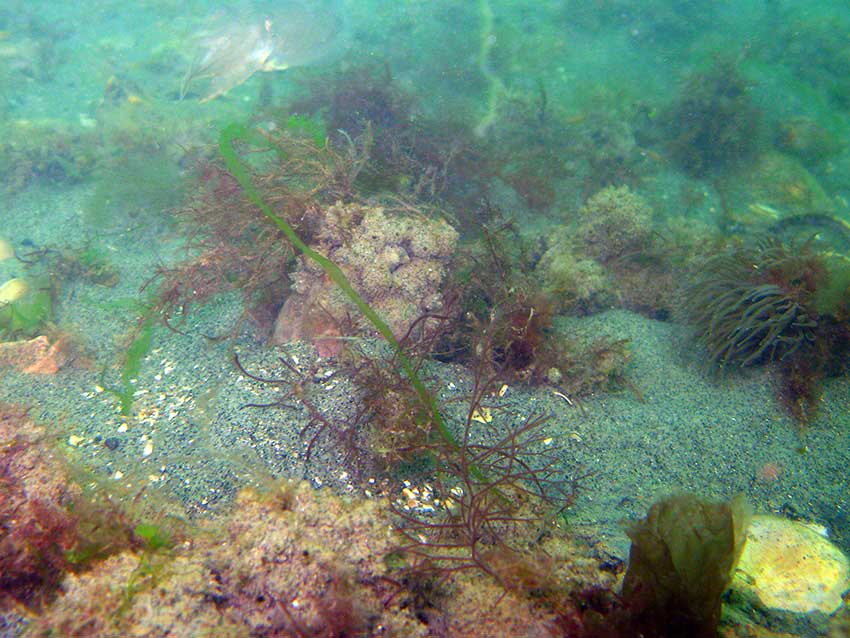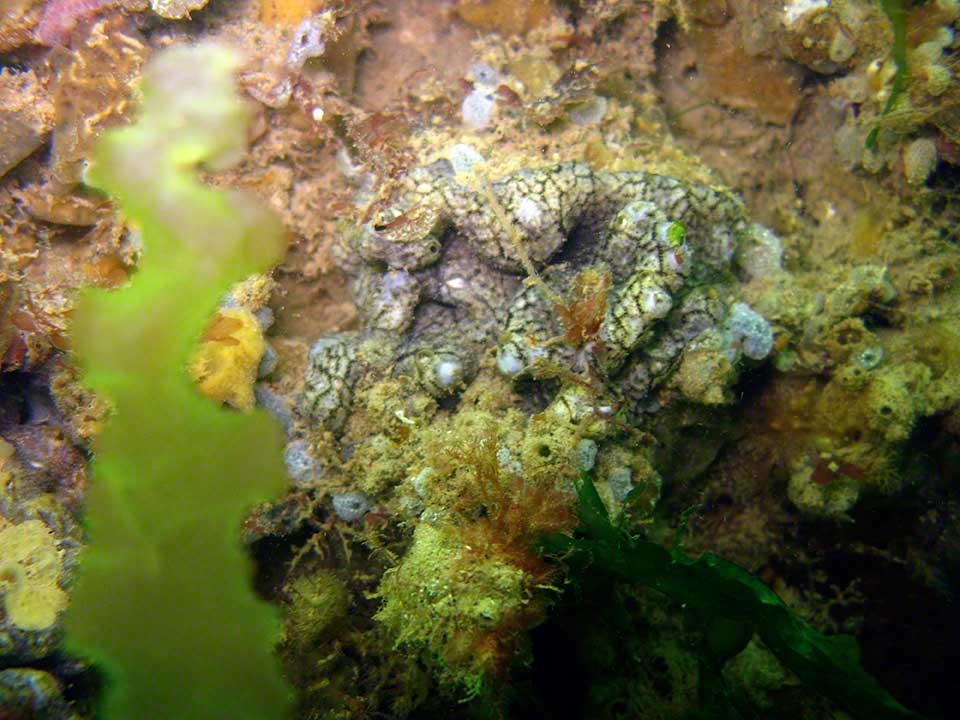The littoral shingle beaches to the east and west of the Life Boat Station grade into sand with shells (slipper limpets, Crepidula fornicata) in the sublittoral fringe then into shingle/cobbles with Crepidula in the upper infralittoral. Patches of sand occur with the casts of lugworm, Arenicola marina. Peacock worms, Sabella pavonia, also occur, predominantly visible during the spring and early summer. Various anemones abound, particularly Dahlia, Urticina felina and Daisy, Cereus pedunculatus on the sandy areas and snakelocks, Anemonia viridis, attached to hard substrata. There is an extensive covering of a diverse mix of algae, dominated in the summer by mermaids tresses (Chorda filum) with various reds. Scattered sea-oak (Halidrys siliqua) are also present. Both these species are a favourite home to Macropodia tenuirostrata spider crabs. The animal turf is very diverse, especially on hard substrates, and is dominated by sponges, hydroids and sea squirts, including extensive patches of Molgula manhatenensis.
Of note are exposures of clay in the form of gullies and boulders. These are particularly obvious during the winter and early spring before they become covered in algae. Up until the the winter storms of 2013 the seabed was pretty well mixed sediment; the storms scoured out the sediment exposing the clay - a situation which was more typical a few years ago. The clay is bored by piddocks, Pholas and Hiatella. With the increase in complexity of the biotope there appears to be an increase in species diversity. Also, many juvenile fish of various species have been observed exploiting the area.
The old life boat station is represented by isolated stumps of wooden pier piles covered in algae and animal turf and are located in the beach immediately adjacent to the current Life Boat Station at: 50°43'39.03"N; 0°46'42.32"W.
In this inshore areas boats are moored. The anchorage points provide additional hard substrata, but some scouring does occur through the combined action of tides and waves on the mooring lines. Various man-made debris can also be found, however, annual 'beach cleans' help to keep this under control. Lost fishing line, hooks and weights are frequently encountered.


























